One of the important tasks when planning a renovation is to choose the flooring for the kitchen. This is important not only from an aesthetic point of view, but also from a technical point of view. After all, it is necessary to properly prepare the base for the coating, and they do it long before the finish. So what floors are better to make in the kitchen should be decided in advance.
Artiklens indhold
The most popular options
If they talk about flooring for the kitchen, the first to pop up are two materials – ceramic tiles and linoleum. They are chosen in most cases. Although popular materials, but not without disadvantages.
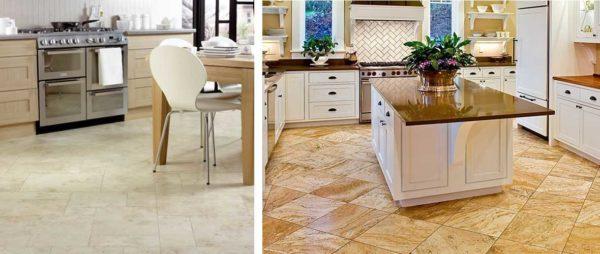
Tiles on the kitchen floor
In terms of practicality, ceramic floor tiles for wet rooms – the best choice. It does not absorb any substances. Water, oil, any other liquid will remain on the surface until you clean it up. Where the liquid can be absorbed is in the seams. And to prevent this from happening, choose a moisture-resistant grout and fill the joints well. In terms of practicality and ease of care, this kitchen flooring is among the first.
To the pluses of this type of material can also be attributed a huge range. You can find any size, shape, color, with drawings and without. The choice is really great.
These were the pluses. Now about the minuses:
As you can see, there are plenty of minuses too. There is one more consideration – on what base will be laid tiles. If the floor is concrete – everything is simple. If necessary, it is leveled with a rough screed then you can put the tiles. If the floor is wooden, it is best to disassemble it and make a screed according to all the rules, and therefore already put tiles on the finished floor. As a result, the total cost of repairing the floor will be considerable.
Linoleum in the kitchen
The second most popular floor covering for the kitchen is linoleum. By tradition, let’s start with the pros. If you take a whole piece of linoleum, then by resistance to water, this type of coating will not yield to ceramic tiles. At the same time, laying will take only a few hours, not days. Lay linoleum on the floor can be done by yourself, but even if you have to hire a master, this type of work is estimated at an average of 4-5$ per square meter.
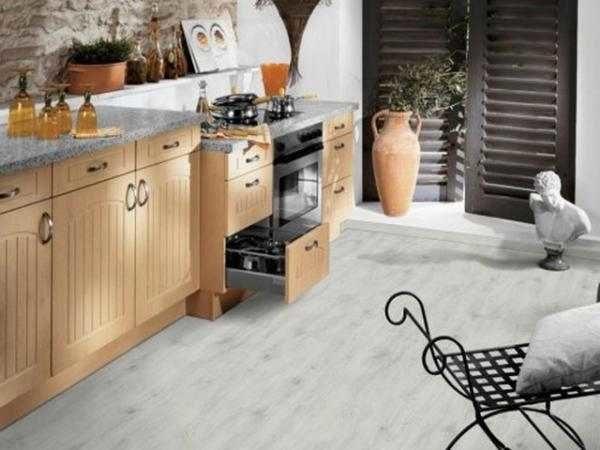
If we talk about the range, then it is not less than that of ceramic tiles. There are different options – from smoothly painted, to imitation of a wooden floor, laminate or parquet, the same tiles, mosaics, etc. True, to linoleum in the kitchen served for a long time, it is necessary to take commercial or semi-commercial class, without a substrate. It is more durable, has a rigid top layer. In the conditions of the house or apartment, it is almost eternal. But this material costs a lot: 25-35$ per square meter – it is quite a normal price. So the price is about the same as laying tiles.
To the pluses of linoleum in the kitchen can also be attributed more cozy atmosphere, as well as the fact that it is not so hard and, when falling, some things have a chance to “survive”. Washes no worse than tile, even easier – divorces are usually not visible. In general, not a bad option.
Let’s move on to the minuses:
- For a wear-resistant coating will have to lay out a lot of money.
- The material is not ecological, although there is a natural linoleum – marmoleum. At a price it is not lower than commercial, but the service life is much less.
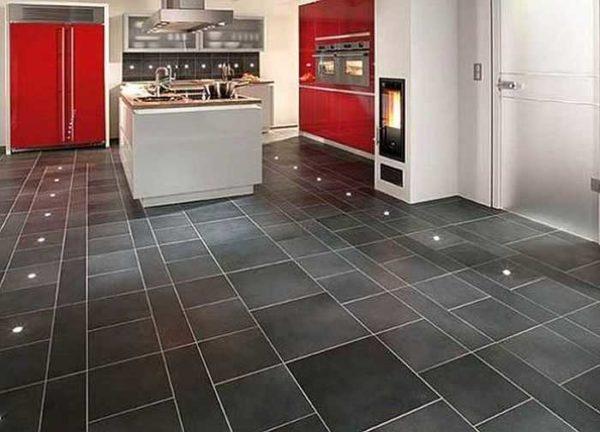
Kind of minuses and a little, but significant. It is also necessary to remember that you must lay linoleum on a level base. It does not matter what kind. The main thing – level, whole, clean. If the floor is concrete – you can lay it on it, but again, it must be level. It is possible on a wooden floor, but if the boards are uneven, it is better to lay a suitable sheet material on them – plywood, fiberboard, OSB, GVL. Choose yourself. On top of the level base put linoleum, often gluing it over the entire surface. Such flooring for the kitchen will be warm and durable.
What other kitchen flooring can be like
In this section, we will talk about less common materials and methods. Partly – these are new materials, partly – not very popular because of the cost or not the most suitable characteristics.

Laminate
Laminate is a popular flooring material. It imitates wooden surface wonderfully, creates an atmosphere of coziness and tranquility. There are different colors – from almost white to almost black. There are even colored variants – painted wood. In general, from the point of view of aesthetics – everything is good. It is not bad in terms of sensations – it is comfortable and warm for feet, the laminate floor is cleaned perfectly, it amortizes shocks well, that is why the fallen dishes are broken less often.
But in terms of practicality, laying laminate flooring in the kitchen is not the most brilliant idea. Yes, there are moisture-resistant types. But moisture resistance is about the surface, and the side edges are still the same material – pressed paper. If a puddle on the floor is not cleaned for a long time (everyone is at work) – several hours – then the moisture-resistant laminate will swell, and after drying it will remain crushed.

It is also worth noting the high cost of moisture-resistant laminate (33 class) – from $10 to $40 per square meter. The work is estimated at 3-6$ per square meter – from the complexity of the laying scheme and the qualification of the master. Apparently because this type of flooring is not very popular for kitchens.
How to lay laminate with your own hands read here.
Cork flooring
Cork flooring in the kitchen is used even less often than laminate. But this is not the fault of the characteristics of the material, but its price – it is an expensive pleasure. The coating itself costs from $ 15 to $ 50 per square, installation services – from $ 7 per square meter. This is provided that the base – perfectly flat and clean.
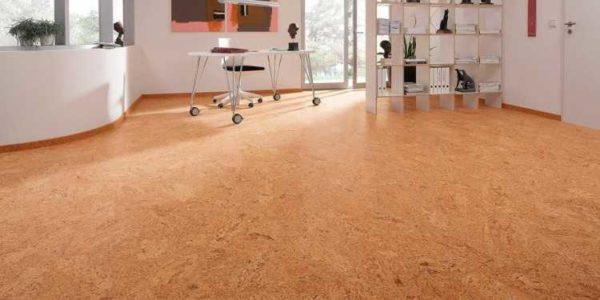
Cork for the floor is on the substrate and without it. In the kitchen, it is better to take without a substrate. The substrate is the same as on the laminate – MDF, and it reacts badly to water (swells). When using adhesive cork, it is glued to the floor on a special glue, covered with 2-3 layers of varnish, which creates a waterproof film. With such installation, even a flood is not terrible.
Flooring for the kitchen from cork – looks very stylish, creates a feeling of coziness, easy to clean (due to the applied lacquer). But if water remains for a long time, the lacquer turns white. It is possible to return its transparency, but it takes a long time. In general, beautiful, expensive, cozy.
Porcelain stoneware
Flooring for kitchens made of porcelain stoneware is durable and beautiful. This material is painted in mass, very dense and rigid. So scuffs, even if they are formed, are not visible. The material has the same advantages and disadvantages as ceramic tile, but it is more expensive and the material itself (from 10$ per square meter) and work on its installation – also from 10-12$ per square.
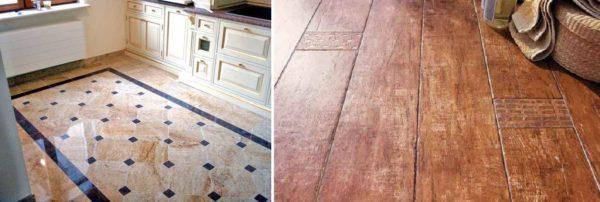
Why is it rarely used? First of all, it is not a cheap pleasure. Secondly, feet are cold, and heating is ineffective – the plates are thick, heat conductivity is low. And thirdly, it looks beautiful, but on large areas.
Poured floors or liquid linoleum
This technology has appeared relatively recently, so not many people know about this possibility. First of all, poured floors will be useful for leveling the base. This solution has the property of self-levelling – it is distributed over the surface, and it levels itself, forming a perfectly flat surface. On this base you can put any other floor covering, chosen by you for the kitchen, and you can make the finish on the same technology – use polymer pouring floor or acrylic with the possibility of making it with a 3D effect. This technology is also called “liquid linoleum”, although it is not the same thing.
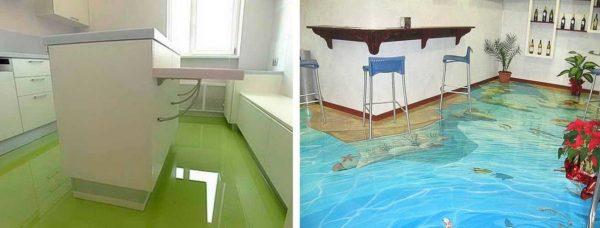
Polymer pouring floor – monochrome, matte or glossy, with different degrees of gloss. The surface can be flat and smooth, or it can be rough. Acrylic – a transparent polymer, under which a film with a drawing is laid on the prepared base. This picture is poured with liquid acrylic, thanks to which the volumetric image is obtained.
On the cost of the poured floor is difficult to say in general. It all depends on the amount of preparatory work. You remember that first you need to level the base. And it is desirable to level, and then the finishing composition of the pouring floor to deviation was no more than 1 mm per square. Only the application of polymer composition without preparation – is from $ 5 per square meter. If it is a variant with 3D pattern – from 15$. All preparatory work is estimated separately. In general, the idea is not cheap, but the result is excellent both externally and in terms of performance.
Vinyl tile
This material from the novelties. Called vinyl or PVC tile, design tile, or LVT (LVT) from the English name luxury vinyl tile. If we talk simplistically, it is cut into pieces of vinyl linoleum. Geometry can be different – squares, rectangles, complex shapes. It can be laid according to the same schemes as laminate or parquet, you can come up with unique combinations, as there are more colors, as well as geometric shapes.
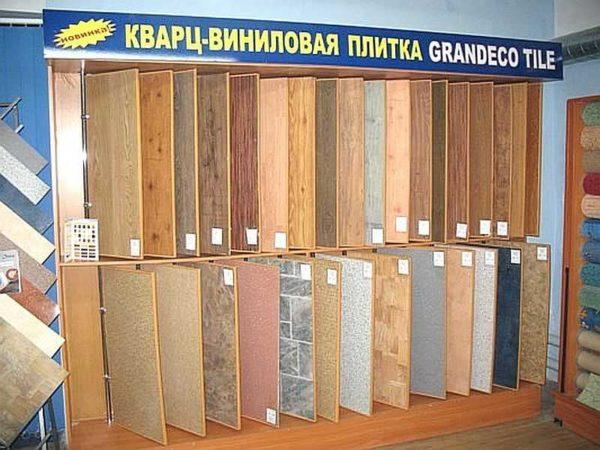
From its predecessor – linoleum – vinyl tile differs in the form of release (cut into pieces) and the way of laying. There is from pure vinyl, there is with the addition of quartz sand. Such a material is called quartz-vinyl tile (sometimes written together – quartz-vinyl coating). Quartz-vinyl is more dense, wear-resistant. The area of application – areas with a high load (commercial premises with high traffic). This material in the home will serve for a long time. If you do not need such durability (like to often change the design), choose pure PVC (in the kitchen is suitable for 32-42 class).
Laying and types of tiles
Vinyl tiles have more stringent requirements for the base. It must be level and rigid. Concrete, cement floor, chipboard or self-leveling screed, plywood, OSB, chipboard are suitable. On a soft porous base (old linoleum) such a tile can not be put. And this base should have a difference of no more than 2 mm per 2 meters of area with two points of extremum (the lowest and highest point).
There are several different types of PVC tiles and several different ways of laying:
What makes this material stand out from linoleum and laminate is the ease of installation. With any method of installation, laying with your own hands – no problem, with little time spent. The most important thing is to pick up the pattern that you want to create. It is cut with an ordinary stationery knife. On the perimeter of the room you need to leave a gap to compensate for thermal expansion (what exactly – indicated on the package, since materials can be used differently).
Fordele og ulemper
If we talk about the price, it is comparable to commercial linoleum, while having an even longer service life, easier to lay and wash (even models with relief). In appearance it can be very similar to parquet or laminate, maybe – tiles, porcelain tiles, marble, etc. Underfoot feels about the same as laminate – warm, but not as rumbling (no “tsk tsk” when walking).
- It can be similar to parquet
- Another variant of “parquet” layout of vinyl tiles
- This is similar to ceramic tile or porcelain tile
The surface is rigid, not squeezed by heels or furniture (including furniture on wheels). This is all based on the feedback from those who are already using it. From all this we can conclude that this flooring for the kitchen – an excellent choice and its only disadvantage – a high price, but it is compensated by a long service life.
Combination flooring in the kitchen
Although laminate in the kitchen is not the best choice, but many people like it for aesthetic reasons, as well as ceramic tiles – ease of care. There is a way – to use these two materials in the same room, but in different areas. Our kitchens are mainly divided into two parts – working, where there are cabinets, stove, etc. and dining – with a table and chairs.
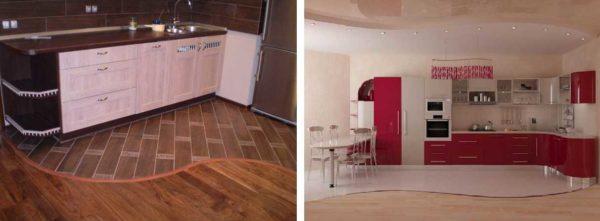
In the working area put tiles or porcelain tiles, in the table area – laminate (you can lay cork). The place where the two materials connect is decorated with a metal or plastic strip in the tone of the coating or bright contrasting.

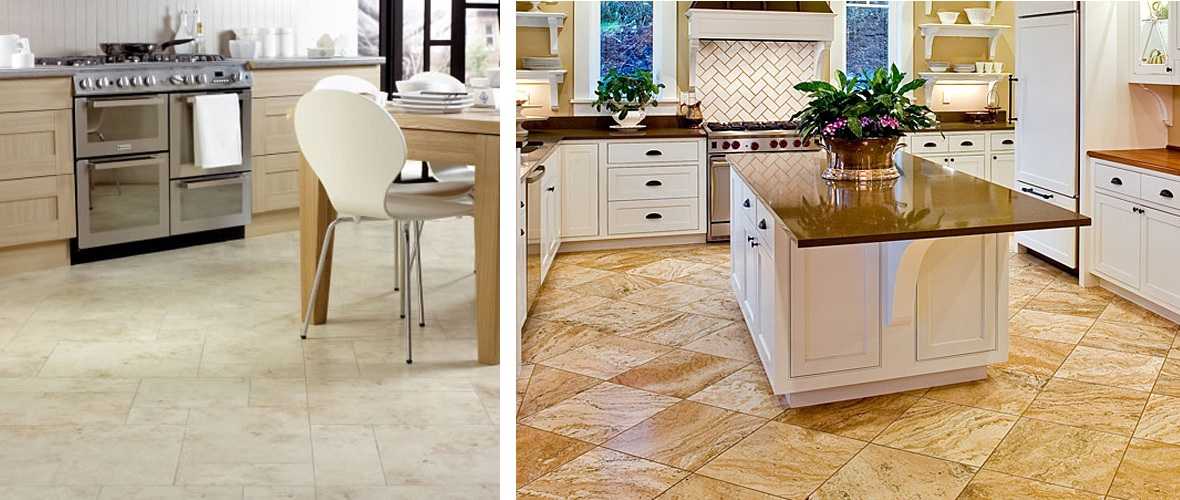
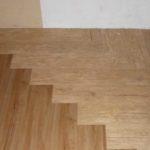
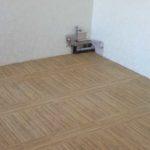
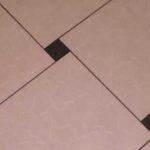
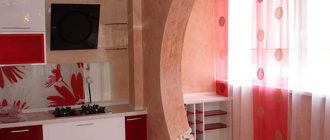
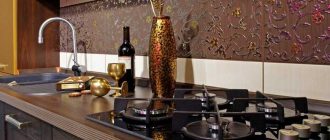
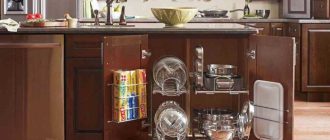
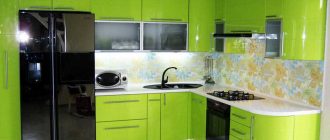
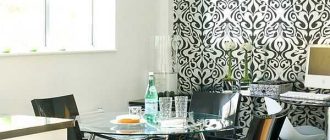
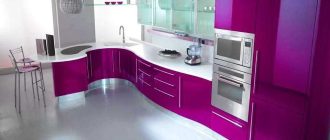
I recently upgraded my kitchen floor to vinyl, and it’s a game changer! Super durable, easy to clean, and looks sleek. If you’re on the fence, just go for it! You’ll love how it brightens up the space and withstands all the spills. Trust me, it’s worth it!
I remember when we redid our kitchen floor. We went with vinyl planks—super easy to clean and they look great. There was this huge spill once, and I just wiped it up without any hassle. Definitely a game changer for kitchen chaos!
Oh man, I totally feel you! We put in vinyl too, and it was a lifesaver during a pizza night disaster. My buddy knocked over a whole drink, and I just grabbed a rag—boom, all clean! Makes such a difference, right? No more stressing over messes!
I totally feel you! When I redid my kitchen, I went for vinyl plank flooring. It looks great and is super easy to clean. Plus, no more worrying about spills soaking in! It’s a game changer, right? Can’t believe I didn’t switch it up sooner!
I remember when we redid our kitchen floor. We went with vinyl, super easy to clean and looks great! It holds up to spills well and feels comfy underfoot. Definitely a game-changer for cooking and baking marathons. Can’t believe I waited so long to upgrade!